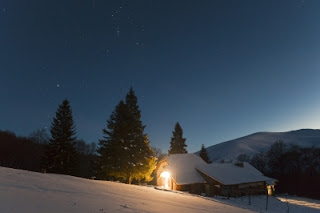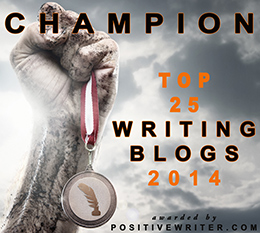I am ecstatic to have author Candace Calvert as my guest on the Alley today! Not only are her books some of my personal favorites, but she is just so sweet and lovable. Read a little further and you'll soon see why you absolutely must pick up one of her fabulous books STAT!
The lovely and uber-talented Candace Calvert....
Often called the author of "medical hope opera," Candace Calvert is an ER nurse who landed on the other side of the stethoscope after the equestrian accident that broke her neck and convinced her love, laughter--and faith--are the very best medicines of all.
Her popular medical drama series (Mercy Hospital and Grace Medical) offer readers a chance to "scrub in" on the exciting world of emergency medicine, along with charismatic characters, pulse-pounding action, tender romance, humor, suspense--and an encouraging prescription for hope. Think "Grey's Anatomy finds its soul"!
A native northern Californian, mother of two and proud grandmother to seven, Candace is a passionate "foodie," equally at home with a whisk in her hand as she is penning stories. Folks who follow her on Twitter and Facebook will find photo-embellished recipes, funny insights into the writing life, snippets of upcoming work, and a chance at book giveaways. Please visit her website at: www.candacecalvert.com.
So Candace, what is your favorite thing about writing?
Oh, good question! Though for most writers it’s a bit like
asking (smile), “What’s your favorite thing about breathing?”
We. Must. Write.
A dear friend sent me a card once, with a photo of an old
typewriter and this quote by Anais Nin:
“We write to taste life twice.”
I know that’s true for me. If I visit an intriguing place,
eat an amazing food, see a sunset, hear a unique sound, inhale a heady scent,
sink my feet into warm sand, or touch a baby’s skin—I almost ache to re-create the experience with
words, savor it all again. And then I long to share it with others. My feelings
too: belly laughs, joy, heartbreak, passion, frustration, pain . . . and the
incredible awe of feeling connected with our great God himself. I want to write
it so my readers can feel it too. And be encouraged by that.
When it works, that’s my favorite thing about writing.
Tell me something about yourself that might surprise your
readers. Good, bad, or quirky—we can take it J
(Laughing) Quirky is my middle name. But we’ll spell it with
a C to make a perfect alliteration: Candace Cuirky Calvert.
-Chewing gum makes me feel claustrophobic.
-Intellectually, I’m awed by whales. Personally, I have a
serious phobia about them. I think I may have been scarred by the movie Pinocchio.
-More seriously: In a former life, I was married to a police
officer. I carried his gun in my purse when we went to the beach and he wanted
to take his shirt off. In my novel Code Triage, I wrote the happier ending
to that ill-fated love story.
What has been your favorite story you’ve written so far?
That’s a hard question! Each story was personal in many
ways—it’s like picking a favorite child.
I’d probably say it’s a tie between Code Triage and Trauma Plan.
Both feature nurse-chaplain Riley Hale.
Her story (from injury to happiness) is one that speaks to me.
What character is most like you and why?
My DNA can likely be found in all of my heroines—and a few
secondary characters. But I’d say I’m probably most like nurse Erin Quinn of Disaster Status. It took me a long time
to stop trying to be a “strong woman,” and learn to become a “woman of
strength.” The difference is faith.
What was the best book you’ve read in the last 12 months?
I’ve had the great privilege of having been (historical
fiction author) Nancy Herriman’s critique partner for more than a decade. Mind you, I normally read contemporary
fiction. But Nancy’s
work is (for me) like overdosing on “Downton Abbey” with a chaser of pure
poetry. Her imagery, dialogue, subtle humor, story “texture” amazes me. If I
didn’t love her, I’d be pea-green with envy.
Josiah’s Treasure is her latest. Loved it.
Do you miss nursing? Or do your medical dramas keep you feeling
connected to the field?
When I hear sirens, part of me still wants to leap up and
join in. When I remember how rugged the last few years in ER were (short
staffing, high census, heightening acuity of cases), I’m grateful to hang up my
scrubs. I do very much miss the camaraderie of the medical team and the
beautiful moments of connection with patients, when “being there” meant so very much. YES, writing medical
fiction does mimic all the best things about being a nurse. The connection with
fellow writers feels very much a “team,” and sharing a story with readers (all
over the world!)—hearing how they are touched by my story—is much like those
special moments with my patients. A
blessing, indeed.
What’s your favorite TV show?
I admit to having too many lately. Superb, tight writing is
what grabs me most. Right now, it’s probably “Downton Abbey”, followed (so
contemporarily) by “Castle,” “Rizzoli and Isles,” “The Good Wife,” and
“Scandal.” British gentry, police procedurals, law and politics—how’s that for
eclectic?
How much of what you’ve written in your books has happened
to you in real life?
A fair amount. Right down to a marriage in jeopardy, sick
horse, paralyzed arm, reconciliation with my father, and . . . skydiving.
13,000 feet. Seriously. My life in
fiction.
What’s next?
The third and final book in my Grace Medical series,
(working title) First Responder, is
scheduled for release in spring of 2014. I’m currently working on a proposal
for another inspirational medical fiction series. Have stethoscope, will write.
Thank you, Amy, for letting me connect with your readers! An
honor, indeed.
Didn't I tell you? Yep, she's amazing!
Don't miss out on Candace's upcoming release Rescue Team! Due out in May and comes highly recommended by this Alley Cat!
Your turn: What's your favorite Candace Calvert novel?
-----Mine? Trauma Plan followed very closely by Disaster Status.
But honestly, you really can't go wrong!
*********************************************************************************

























































